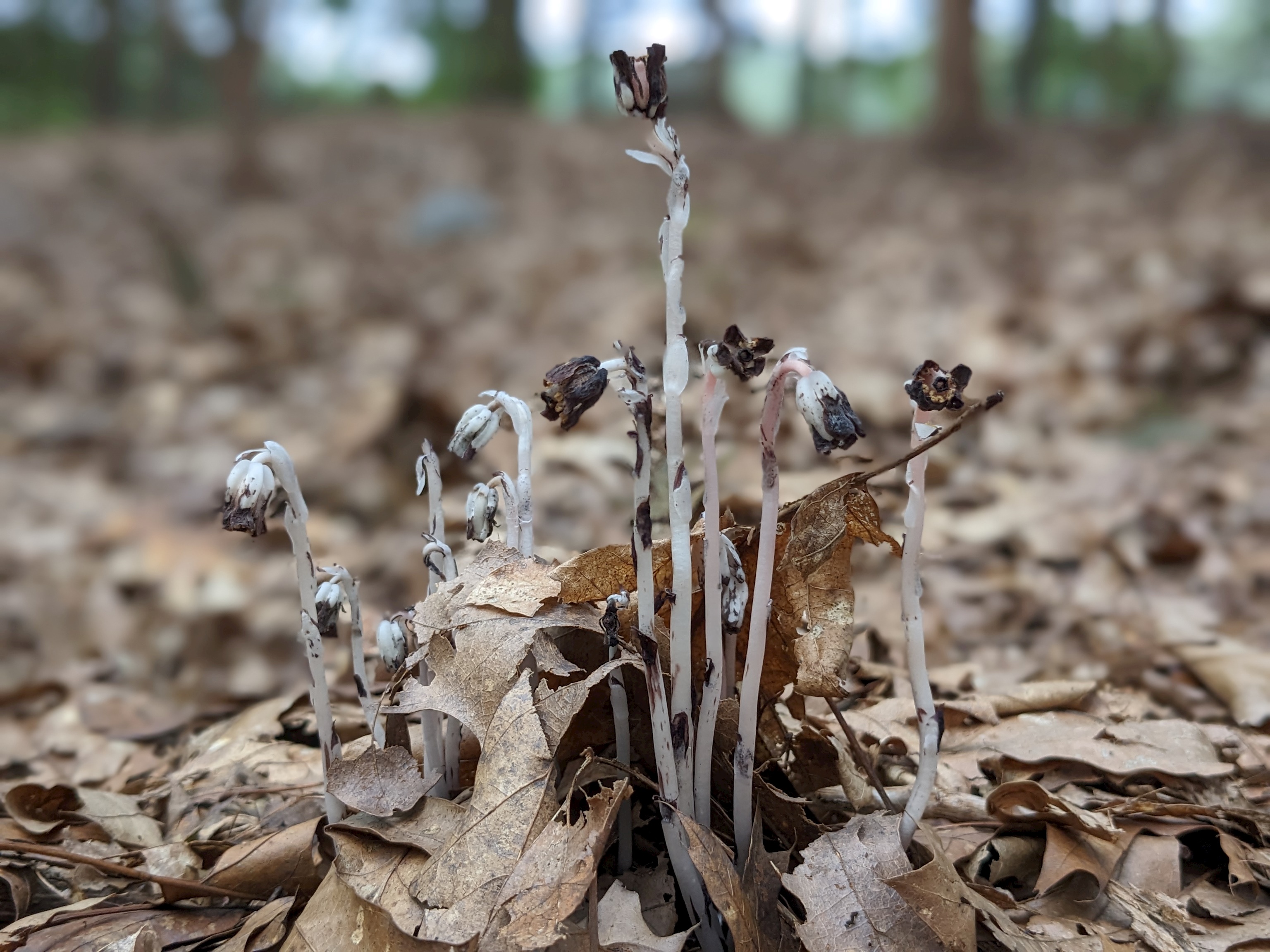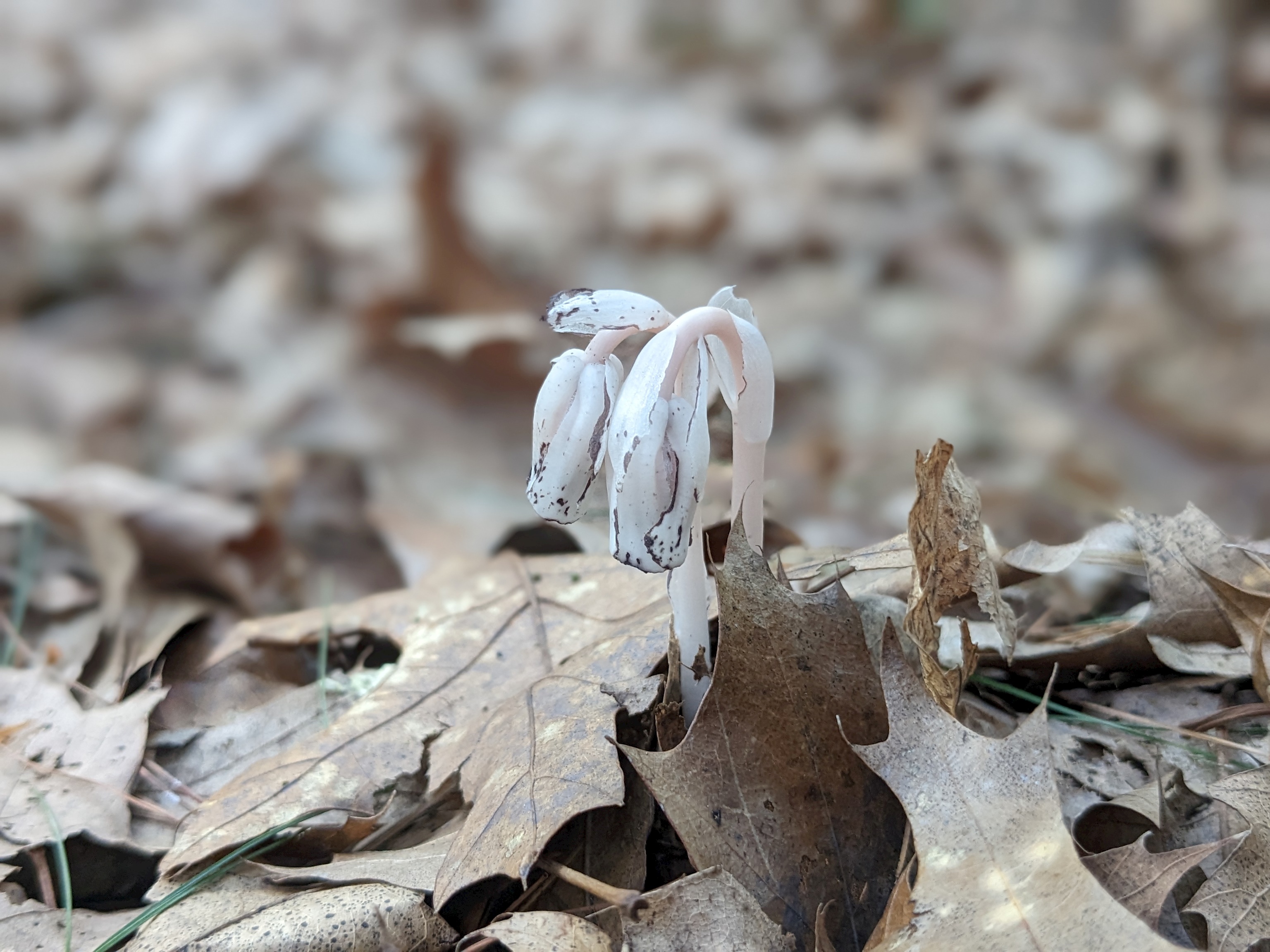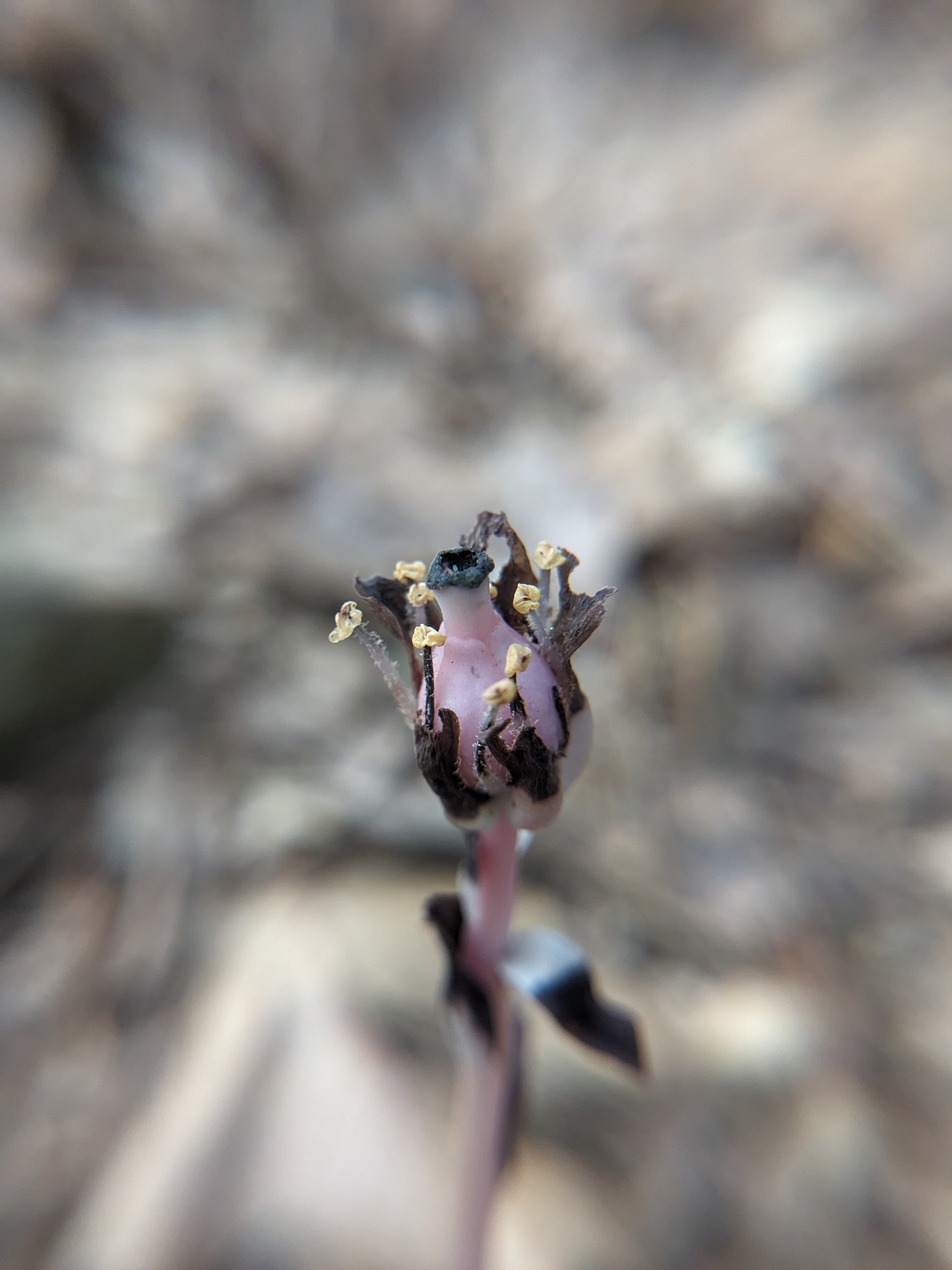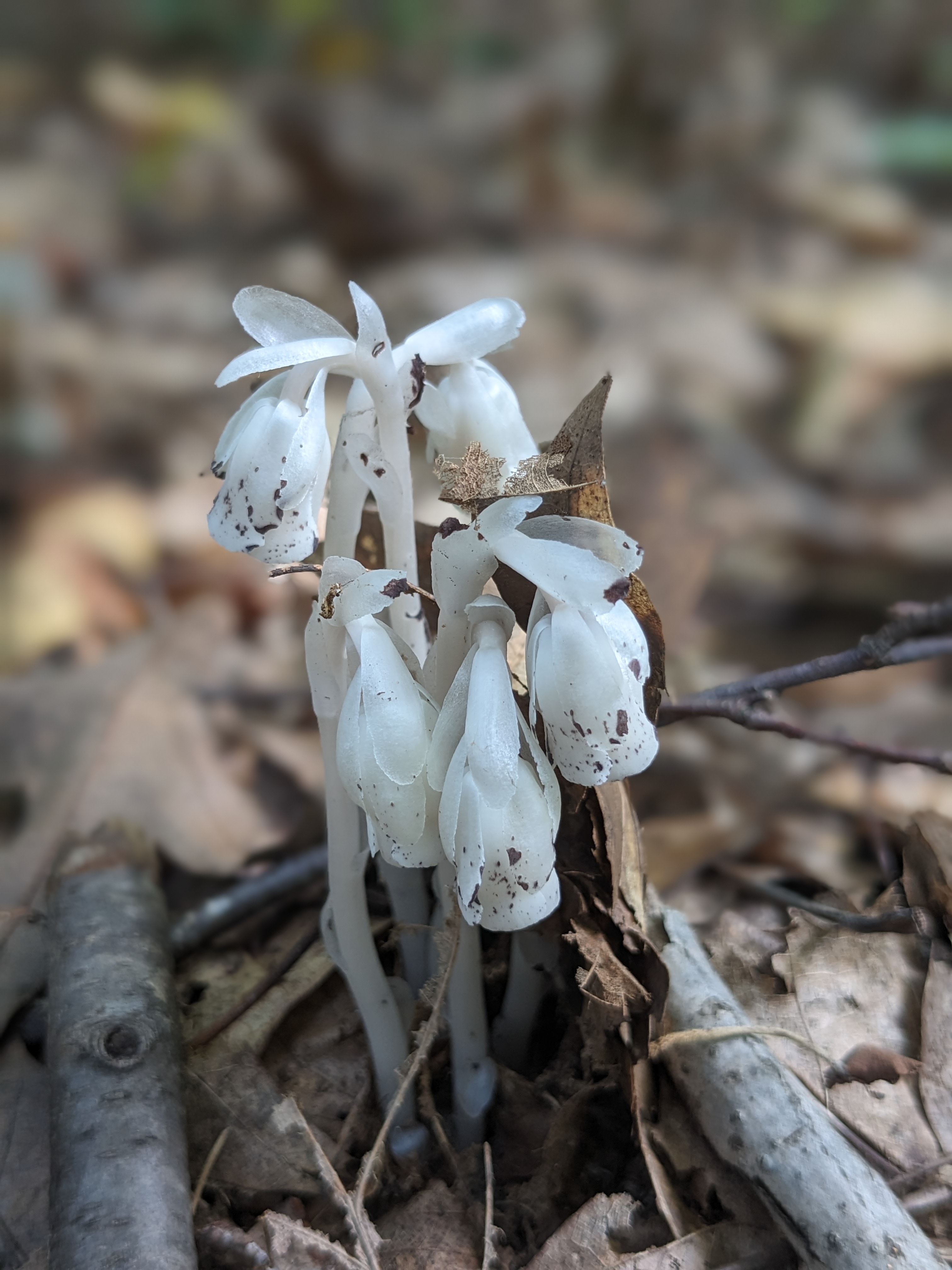
What's a Wonder Spot? Inspired by the Arnold Arboretum the LMS Outdoor Team periodically sends out Wonder Spot emails that highlight a natural phenomenon at LMS. These give context and language to what we see around us and can provide opportunities for outdoor lessons, curriculum connections, and features for nature walks. We'll mark the actual spots with a sign so that you can easily find them, and we'll provide a few suggestions for how you can observe or engage with them. Use them as you see fit and let us know what you think!

Wonder Spot - Ghost Pipes
Popping up through the leaf litter just past the trail kiosk stand numerous clusters of ghost pipes. Frequently mistaken for fungi, ghost pipes are actually an herbaceous plant that lacks chlorophyll. Instead of photosynthesizing, this parasitic plant saps nutrients from tree roots through the mycorrhizal network.

Ghost pipes consist of a stem that droops down with a single flower on the end.

Once the flower is fertilized, typically by a bee, the flower stands erect and disperses its seed by wind.
The next time you're out on the 19 acres, pause on the path and see if you can spot the ghost pipes blending in with the leaf litter. Their delicate flowers and camouflage are a good reminder of why we stay on the path, giving plenty of space for plants, fungi and animals to live and grow.

Further ideas for exploring this Wonder Spot with your class (or family!):
- What colors are the ghost pipes? What color is the leaf litter on the ground? In what ways do they blend in with their surroundings?
- Examine a few ghost pipes from the path. Based on the position of the flower, are they fertilized or unfertilized?
- What makes parasitic plants unique? What are other examples of parasitic plants we can look for on the 19 acres?
- What is the origin of this plant's name? What other names does it go by?
Elise, LMS Elementary Outdoor Montessori Teacher





